A belated happy new year, my dear followers!
So, I have a neat idea for a new series coming up. But after the holidays (which were pleasantly busy) and some interpersonal scuffling in January (which was not nearly as lovely, but came to an all-right enough resolution), my idea bank was absolutely flat broke.
A nice chat with friends has filled the bowl up, but while I work on those posts, here is something I stashed off to the side after a Facebook conversation last year.
I often reference fashion and clothing to help get in the right mindset for my writing projects. Whilst working on Poe's Outlaws (Book 4 of The Meaning Wars series; book 3, The Meaning Wars, is ready for beta-reading and edits now!) I indulged in my usual technique of sifting through Dolls Kill and Pinterest to look at various bits of outre, fun, futuristic fashion.
Of course, when working on Monsters and Fools and planning for After the Garden's sequels, I also like to look at post-apocalyptic and distressed clothing. I like distressed clothing anyway, but it tends to get a lot of flack.
On an episode of a podcast called Minion Death Cult, the hosts discussed some common reactions of tradespeople and Boomers to distressed and some faux-muddy jeans. (Not unsurprisingly, there were a lot of tired jokes about just selling people old, worn-out jeans from "real" tradesmen.) But not a lot of people understand how distressed clothing works, or why it's somehow different from their dad's old, grimy jeans and tattered denim jacket, so I'm going to break it down.
Note: all images in this article came from the Nordstrom website. Most or all are designed by PRPS.
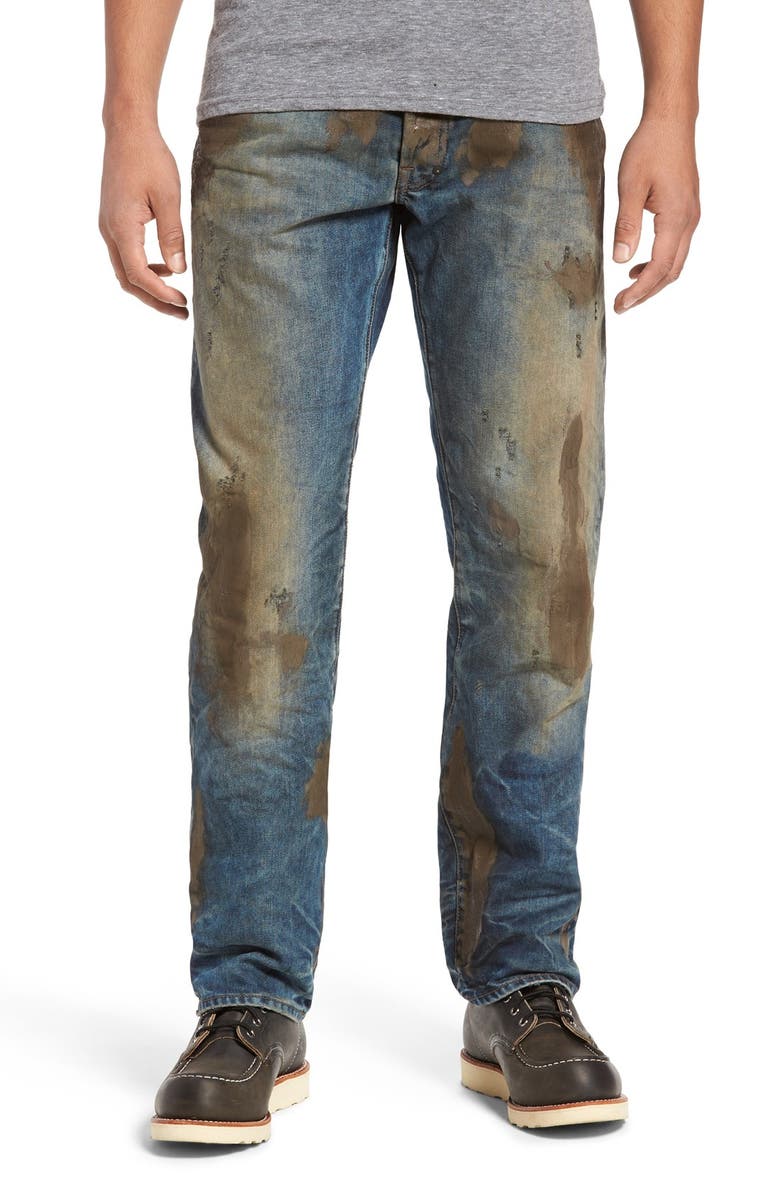
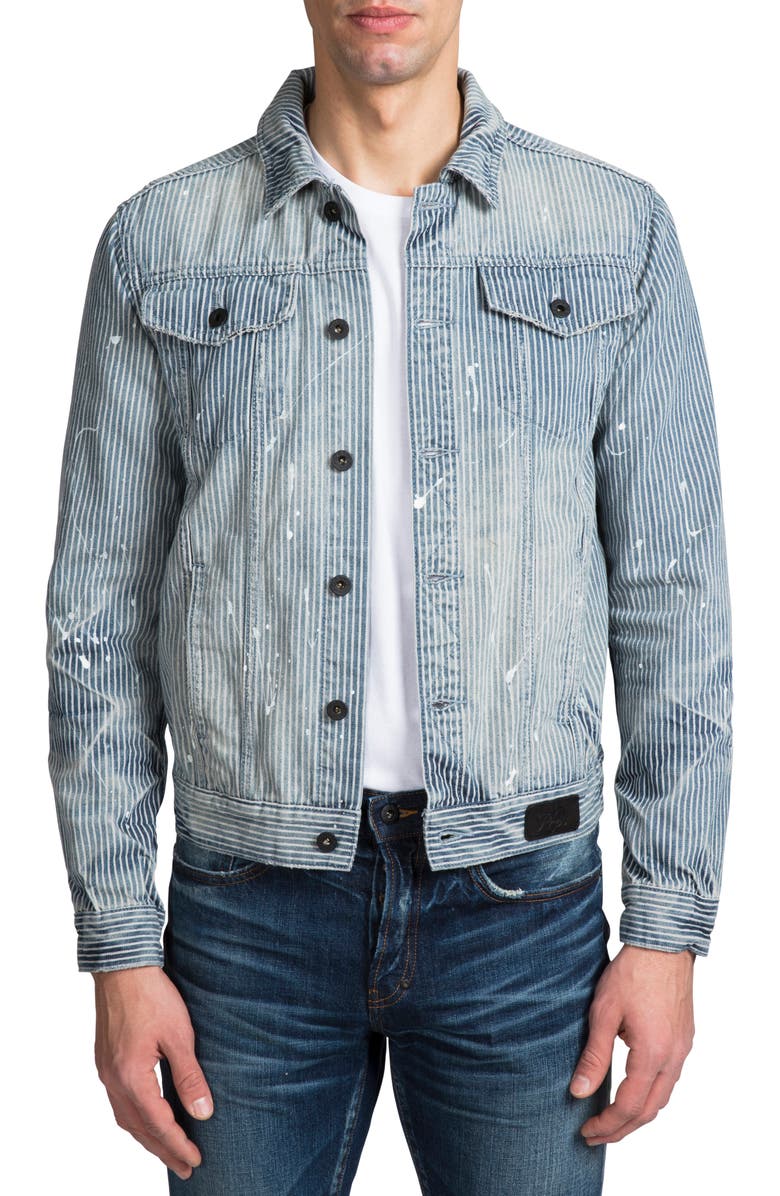
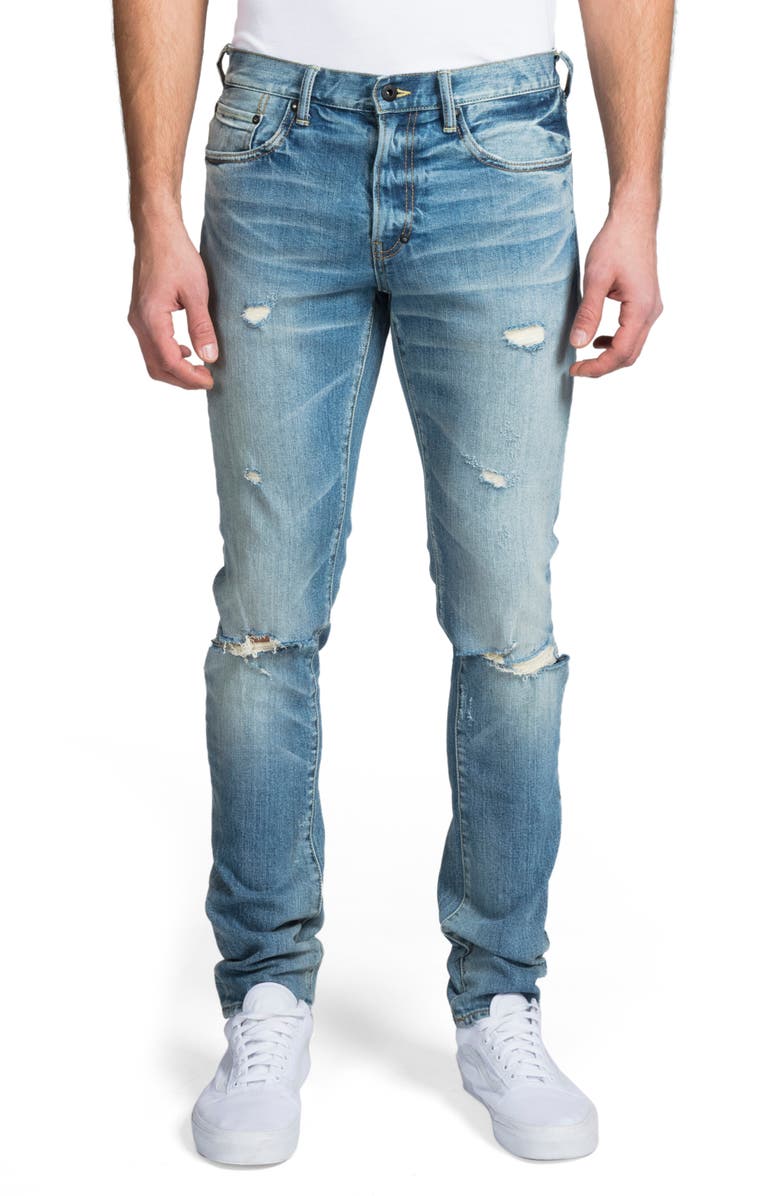
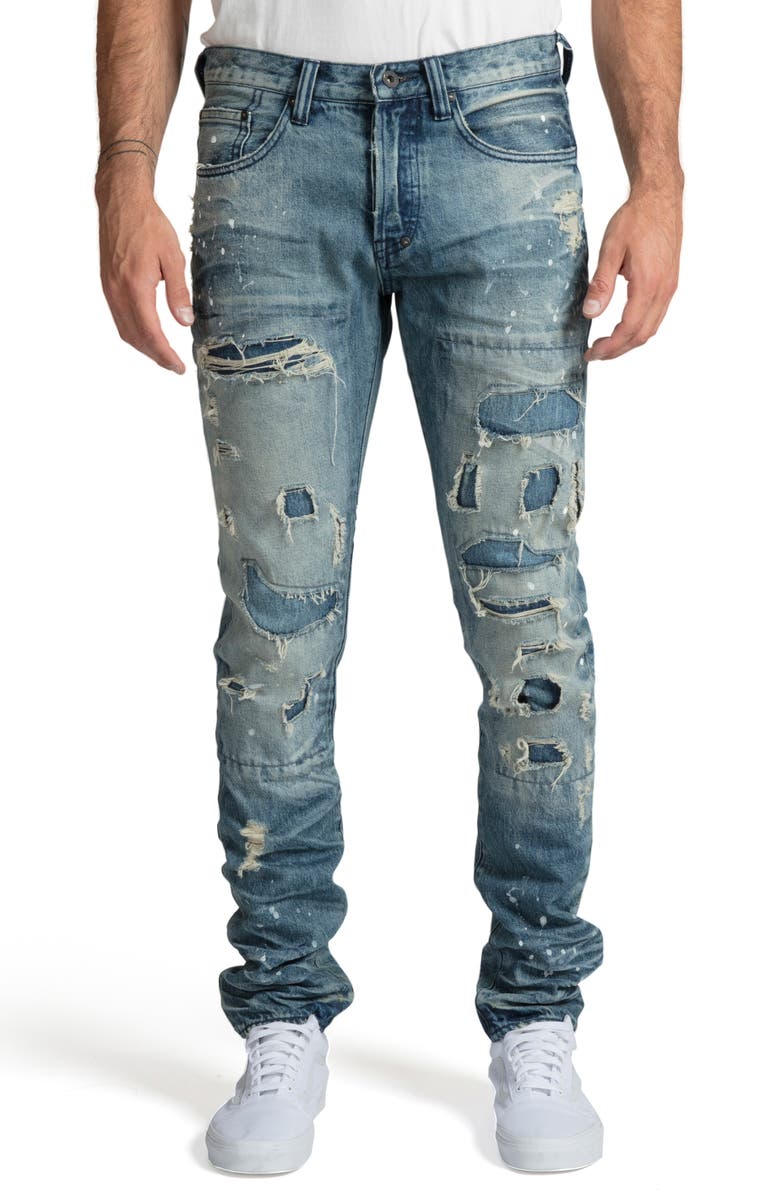
I'm gonna take the unusual stance here of defending distressed jeans, because I've been studying and making distressed knit clothing and other types of distressed clothing for a bit. Why? Because I like post-apocalyptic fashion, and I think wrecked things are often beautiful.
You may be familiar with the term "wabi-sabi," which sometimes passes in and out of vogue for decorating trends. The term is comprised of two Japanese words - wabi, in a nutshell, refers to the beauty of simplicity; sabi, to the beauty of age and use. There's a bit more to it, but that's the quick explanation of these beautiful and imperfectly translatable terms. Wabi-sabi is usually used in reference to home decor, but it totally applies to clothing, too.
Anyway, getting on with the point - the thing about dirty jeans is that they're gonna leave dirt on wherever you sit. Fake dirt still captures the same look, the rather beautiful way the brown stains and fades into the tightly woven blue threads, but it won't leave big ol' scuffmarks on your leather car seats.
As for the distressing, the interesting and beautiful way that denim falls apart tends to happen in less sexy areas - the knees, the thighs, the crotch. Distressing clothes on purpose lets you get the look without impairing the wearability and structural integrity of the clothes. Sometimes that doesn't work at all, like with the cheaper distressed jeans that are all holes and have a high spandex content, but that's still the idea.
As far as how this relates to designing and making clothing, with knitwear (such as the awesome punk sweaters we all may love, or at least have seen before), it's important to know how the particular fibres and yarns work structurally. There's a reason why clothing made to be or look distressed looks so awesome and a lot of actually busted up clothing or "home-made" distressed stuff looks crappy. Knowing where and how to cut fabric in pre-made knits, how to style the runs, or how to make patterns with the runs and holes, is all very calculated. As I've learned myself, if you try to distress a finely-knit sweater, it'll look like crap; distressing needs a chunkier, thicker yarn to be really noticeable. And wet-blocking a ravelled sweater (stretching while wet) is very important - otherwise, the threads maintain their curled appearance, and don't become those straight lines that create contrast with the curving knitted stitches. It's also really important to actually tie off runs in a distressed sweater, or the whole thing will, in fact, unravel.
The advantage of knitting a sweater with a distressed look is that you can control this process. In effect, dropped stitches and yarn-overs create a sort of freeform lace look, and don't destroy the structural integrity of the sweater (which unravelling a pre-made sweater CAN do).
So basically there IS a method to the madness in pre-distressed clothing, and knowing how to distress your clothing well and safely - whether it's for a stage production, Halloween, or fashion - takes more than sharp scissors and boredom!
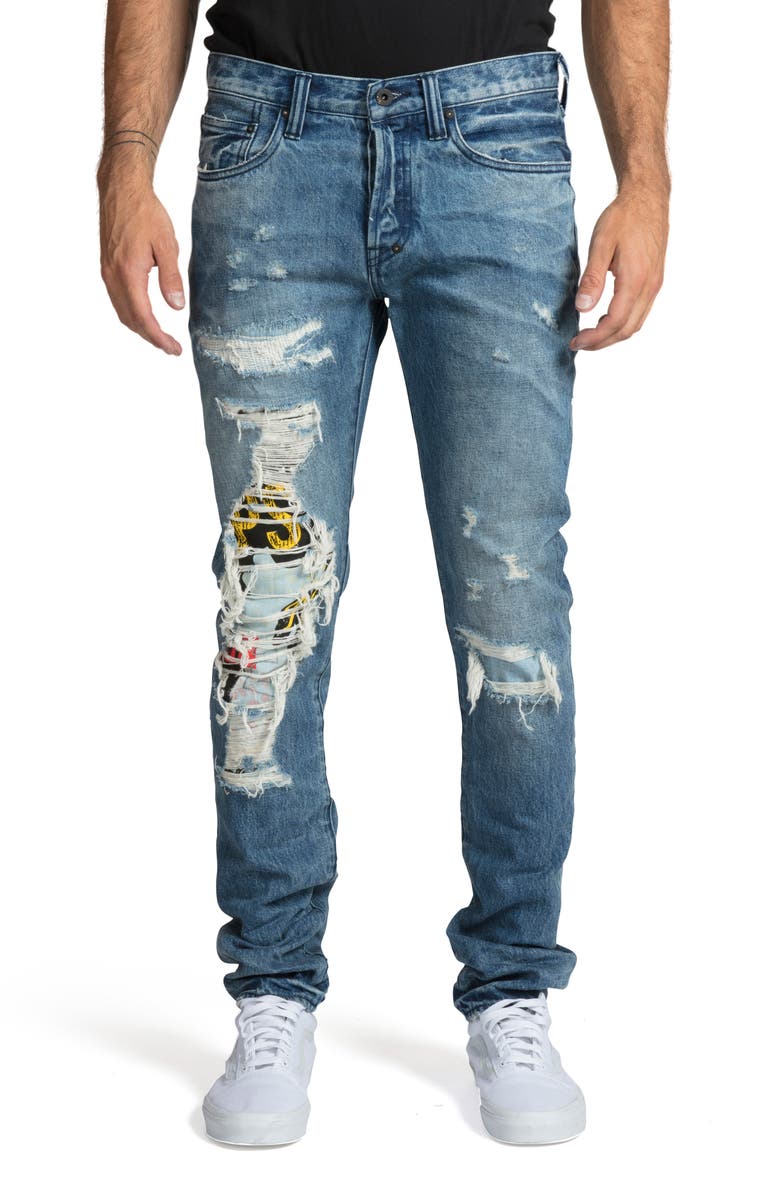
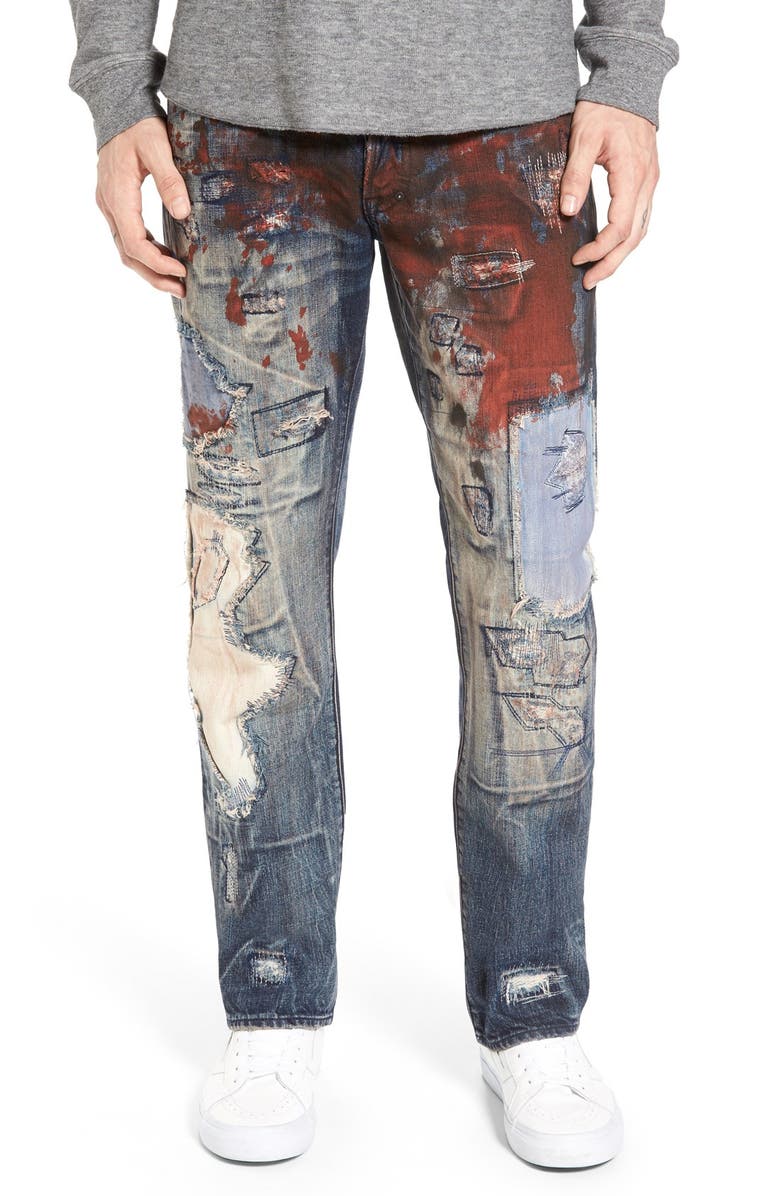
However, to my surprise, most of her jewelry was either minimalist and geometric, or covered in dented and scratched textures, like this!
There is real value in appreciating things as we wear them out. If we are to shift to a less consumption-driven culture, which is necessary in the fight against climate change, we're gonna have to get used to not having things that look new all the time. Supplies and availability of items may be restricted. Repairing clothing and items instead of just throwing them out has also become pretty popular amongst Generation Z, many of whom are embracing thrifting and minimal-waste lifestyles.
But in addition to that, there's also a beauty in the broken or fraying, the imperfect, the less-than-new. Most of the time we spend with an item will be active. Jewelry gets scratches. Clothes rip. Colours fade. Paper tears. And all of those things expose new beauties and different aspects of the item, revealing its structure and design and suggesting or reminding us of experiences we've had.
After all, our possessions act as anchors for memories. There's a reason why in pre-industrial times, treasured items were passed down through generations or repaired over and over. Our things aren't just pretty diversions or useful parts of daily life - they're parts of our lives, woven or tangled with our memories.
So, I have a neat idea for a new series coming up. But after the holidays (which were pleasantly busy) and some interpersonal scuffling in January (which was not nearly as lovely, but came to an all-right enough resolution), my idea bank was absolutely flat broke.
A nice chat with friends has filled the bowl up, but while I work on those posts, here is something I stashed off to the side after a Facebook conversation last year.
I often reference fashion and clothing to help get in the right mindset for my writing projects. Whilst working on Poe's Outlaws (Book 4 of The Meaning Wars series; book 3, The Meaning Wars, is ready for beta-reading and edits now!) I indulged in my usual technique of sifting through Dolls Kill and Pinterest to look at various bits of outre, fun, futuristic fashion.
Of course, when working on Monsters and Fools and planning for After the Garden's sequels, I also like to look at post-apocalyptic and distressed clothing. I like distressed clothing anyway, but it tends to get a lot of flack.
On an episode of a podcast called Minion Death Cult, the hosts discussed some common reactions of tradespeople and Boomers to distressed and some faux-muddy jeans. (Not unsurprisingly, there were a lot of tired jokes about just selling people old, worn-out jeans from "real" tradesmen.) But not a lot of people understand how distressed clothing works, or why it's somehow different from their dad's old, grimy jeans and tattered denim jacket, so I'm going to break it down.
Note: all images in this article came from the Nordstrom website. Most or all are designed by PRPS.




I'm gonna take the unusual stance here of defending distressed jeans, because I've been studying and making distressed knit clothing and other types of distressed clothing for a bit. Why? Because I like post-apocalyptic fashion, and I think wrecked things are often beautiful.
You may be familiar with the term "wabi-sabi," which sometimes passes in and out of vogue for decorating trends. The term is comprised of two Japanese words - wabi, in a nutshell, refers to the beauty of simplicity; sabi, to the beauty of age and use. There's a bit more to it, but that's the quick explanation of these beautiful and imperfectly translatable terms. Wabi-sabi is usually used in reference to home decor, but it totally applies to clothing, too.
Anyway, getting on with the point - the thing about dirty jeans is that they're gonna leave dirt on wherever you sit. Fake dirt still captures the same look, the rather beautiful way the brown stains and fades into the tightly woven blue threads, but it won't leave big ol' scuffmarks on your leather car seats.
As for the distressing, the interesting and beautiful way that denim falls apart tends to happen in less sexy areas - the knees, the thighs, the crotch. Distressing clothes on purpose lets you get the look without impairing the wearability and structural integrity of the clothes. Sometimes that doesn't work at all, like with the cheaper distressed jeans that are all holes and have a high spandex content, but that's still the idea.
As far as how this relates to designing and making clothing, with knitwear (such as the awesome punk sweaters we all may love, or at least have seen before), it's important to know how the particular fibres and yarns work structurally. There's a reason why clothing made to be or look distressed looks so awesome and a lot of actually busted up clothing or "home-made" distressed stuff looks crappy. Knowing where and how to cut fabric in pre-made knits, how to style the runs, or how to make patterns with the runs and holes, is all very calculated. As I've learned myself, if you try to distress a finely-knit sweater, it'll look like crap; distressing needs a chunkier, thicker yarn to be really noticeable. And wet-blocking a ravelled sweater (stretching while wet) is very important - otherwise, the threads maintain their curled appearance, and don't become those straight lines that create contrast with the curving knitted stitches. It's also really important to actually tie off runs in a distressed sweater, or the whole thing will, in fact, unravel.
The advantage of knitting a sweater with a distressed look is that you can control this process. In effect, dropped stitches and yarn-overs create a sort of freeform lace look, and don't destroy the structural integrity of the sweater (which unravelling a pre-made sweater CAN do).
So basically there IS a method to the madness in pre-distressed clothing, and knowing how to distress your clothing well and safely - whether it's for a stage production, Halloween, or fashion - takes more than sharp scissors and boredom!


Predictably, clothes like this inspire retorts like, "I could give you my old jeans covered in cow manure and farm dirt and motor oil for that price!" But that's the point - the "fake dirt" that so baffled the Washington Post and CNN, where reporters appeared unfamiliar with the concept of "p a i n t", will not rub off or dirty other surfaces. The pants don't contain the scent and sweat of another person's work, nor are they worn out and about to fall apart, as those pants probably are. (For example, the wear patterns and distressing and whiskering all appear on the thighs and calves of the jeans, rather than in the crotch, around the bottom cuffs, and etcetera.)
It's not about pretending you work - it's about exploring the beauty of entropy and things that are lived-in. The way fabric dye fades, the soft whiskering of denim fabric, the delicate feathers of raw-edged cotton - all of these have their own beauty. Repairs can create a contrast from the original fabric or material as well, and it needn't be ugly. People familiar with "that weird gold thing," kintsuogi, may also know have seen it in cases where useful objects are repaired and the cracks are patched with gold leaf to highlight their beauty.
Here's another example of finding beauty in marks and unexpected places. When I saw an advertisement for Canada Post that featured a very intriguing necklace, I tracked down the artist's work and had a look at her site.
However, to my surprise, most of her jewelry was either minimalist and geometric, or covered in dented and scratched textures, like this!
There is real value in appreciating things as we wear them out. If we are to shift to a less consumption-driven culture, which is necessary in the fight against climate change, we're gonna have to get used to not having things that look new all the time. Supplies and availability of items may be restricted. Repairing clothing and items instead of just throwing them out has also become pretty popular amongst Generation Z, many of whom are embracing thrifting and minimal-waste lifestyles.
But in addition to that, there's also a beauty in the broken or fraying, the imperfect, the less-than-new. Most of the time we spend with an item will be active. Jewelry gets scratches. Clothes rip. Colours fade. Paper tears. And all of those things expose new beauties and different aspects of the item, revealing its structure and design and suggesting or reminding us of experiences we've had.
After all, our possessions act as anchors for memories. There's a reason why in pre-industrial times, treasured items were passed down through generations or repaired over and over. Our things aren't just pretty diversions or useful parts of daily life - they're parts of our lives, woven or tangled with our memories.
***
Michelle Browne is a sci fi/fantasy writer and editor. She lives in Lethbridge, AB with her partner-in-crime and Max the cat. Her days revolve around freelance editing, knitting, jewelry, and learning too much. She is currently working on other people’s manuscripts, the next books in her series, and drinking as much tea as humanly possible.

No comments:
Post a Comment
As always, be excellent unto others, and don't be a dick.